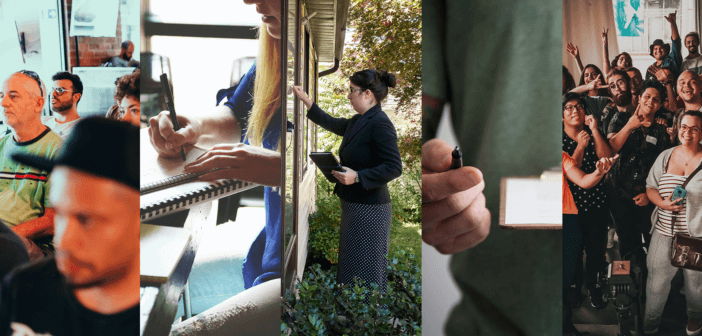Anthony Hunt writes that recent social movements raise the question of how protest moments can lead to substantial, sustainable social change. He outlines eight steps for galvanizing support and moving from reaction to constructive, coordinated action.
Recent protests across America have heightened awareness of several urgent social issues — from Black Lives Matter and the need for police reform, to the Me Too movement, the 2017 Women’s March on Washington, and the Never Again movement for comprehensive gun control following the 2018 Parkland school shootings. These protests raise the question of how to bring about substantial, sustainable change. In other words, how can protest moments become social action movements?
The story of Nehemiah is a case study on how social transformation can occur through effective organizing and concerted community action. The first seven chapters of the book of Nehemiah tell the story of rebuilding Jerusalem’s walls. Notably, Jerusalem’s walls were rebuilt in 52 days, while the oppression of the people and destruction of Jerusalem had gone on for 141 years. The American Civil Rights movement, South Africa’s anti-Apartheid and Solidarity Movement, and other social reform movements around the world also offer lessons on bringing about sustained, scalable social change. They reveal the importance of several principled steps a community can undertake to make meaningful social change the outcome of public protest.
1. Organize
Every cause is different, but they all need organization to succeed. What people, processes and resources are needed to address the cause? One key aspect of organizing is building effective teams with clearly defined roles, relationships, responsibilities, and expectations. Here, it is critical to cast a wide net including many different people with experiences, gifts, and passions that can contribute to the cause. Another critical organizational step is to clarify the mission, vision, and purpose (MVP) of the movement. A clear MVP lays a foundation for the next key steps that follow.
2. Strategize
Listening to and learning from people with many perspectives is key to developing a strategy and setting a course for sustained change. This often occurs in listening sessions and focus groups. Nehemiah recognized “the trouble we are in” (2:17). He knew that rebuilding of the walls would require proper planning and strategy. Likewise, during the early days of the Civil Rights movement in Alabama, there were often strategy sessions in homes or churches before and after public protests to determine the best long-term and short-term actions.
3. Negotiate
A great deal of change occurs behind the scenes. For instance, as an outcome of recent Black Lives Matter protests in Baltimore, a coalition of elected and appointed officials, along with community and religious leaders, have met to negotiate proposed police reform legislation for Baltimore County, Maryland. Negotiation should involve all of the stakeholders representing interests potentially impacted by change and should focus on specific changes and necessary steps.
4. Mobilize/Implement Change
In her book Ferguson and Faith, Leah Gunning Francis explains how, after the 2014 protests following the death of Michael Brown, there came a time for persons to “pray with their feet.” During mobilization, people, processes, and resources come together strategically in support of change. Commitment becomes critical in this phase. Mobilization can involve attending public and private meetings, participating in ongoing negotiating teams, or working on communication, public relations and social media, and fundraising.
5. Collaborate
Social action movements draw strength from partnerships among various interests — local elected and appointed government leaders; non-profit, business, and community leaders; and religious leadership — across ages, genders, races, classes, and perspectives. These partnerships typically develop around common interests such as improving education, economic development, public safety, or other concerns. Collaboration enhances agency and power in movements, as a cross-section of people and resources can effect greater change together than if they operate separately.
6. Evaluate
Dr. Martin Luther King Jr. once stated that “change doesn’t roll in on the wheels of inevitability.” It typically involves hard work, long hours, persistence, and sacrifice. The Montgomery bus boycott, which King helped lead in 1955-56, lasted for 381 days filled with “tired feet and weary souls.” At various intervals in a sustained movement, it is important to evaluate. Evaluation provides the opportunity to assess what is working and what internal changes may need to occur to sustain efforts toward change.
7. Recalibrate
Evaluation of successes and challenges often points to a need to recalibrate, reorganize, re-strategize, and redirect resources, both people and finances. It is easy for groups to lose focus and for people to forget the purpose behind the need for change even in the midst of a movement. Resetting and refocusing sustains momentum in the face of inevitable political and social changes that impact organizations and plans.
8. Celebrate
In his book Crisis in the Village, Robert M. Franklin writes of the importance of celebrating progress. At various points on the journey toward change through social action, it is important to pause and celebrate. This encourages and honors the commitments of those essential to the movement. Celebration consolidates gains, documents progress, and lays the foundation for what must come next. Pausing to celebrate success also creates historical markers that can inspire and educate people in the future.
Seasoned leaders know the road to meaningful social change is long and steep. The likelihood of arriving at the desired destination is enhanced when leaders take deliberate steps to transform protest into sustainable action.
Related Resources
- Leading Like Nehemiah: Rebuilding Together, a Lewis Center Video-based Adult Christian Study Curriculum
- Leading in an Age of Political Polarization by David R. Brubaker
- 5 Things to Consider Before Engaging a Public Issue by Ginger Gaines-Cirelli
- Martin Luther King Jr.’s 4 Key Principles of Prophetic Witness by Tony Hunt







